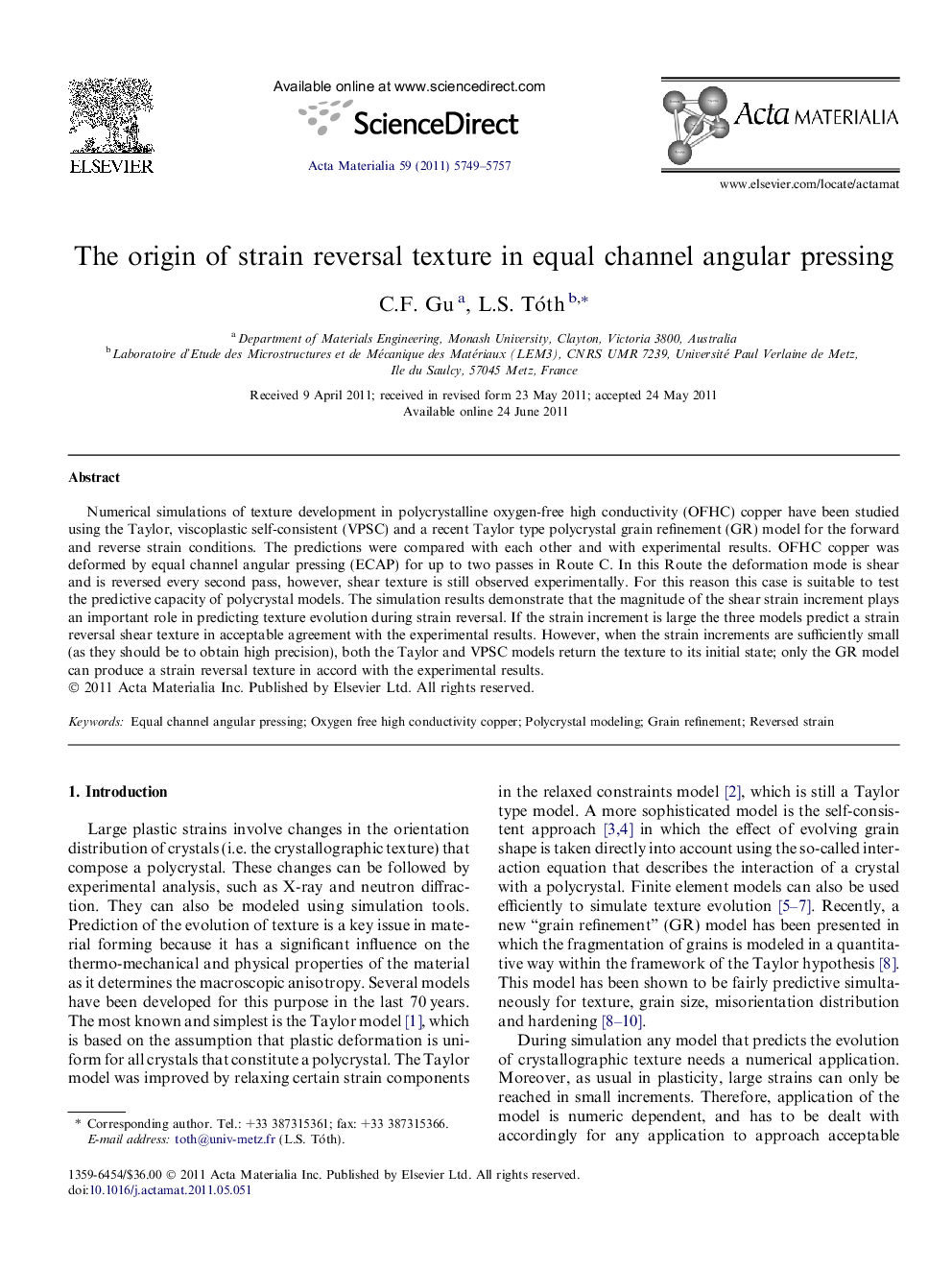| Article ID | Journal | Published Year | Pages | File Type |
|---|---|---|---|---|
| 1447318 | Acta Materialia | 2011 | 9 Pages |
Numerical simulations of texture development in polycrystalline oxygen-free high conductivity (OFHC) copper have been studied using the Taylor, viscoplastic self-consistent (VPSC) and a recent Taylor type polycrystal grain refinement (GR) model for the forward and reverse strain conditions. The predictions were compared with each other and with experimental results. OFHC copper was deformed by equal channel angular pressing (ECAP) for up to two passes in Route C. In this Route the deformation mode is shear and is reversed every second pass, however, shear texture is still observed experimentally. For this reason this case is suitable to test the predictive capacity of polycrystal models. The simulation results demonstrate that the magnitude of the shear strain increment plays an important role in predicting texture evolution during strain reversal. If the strain increment is large the three models predict a strain reversal shear texture in acceptable agreement with the experimental results. However, when the strain increments are sufficiently small (as they should be to obtain high precision), both the Taylor and VPSC models return the texture to its initial state; only the GR model can produce a strain reversal texture in accord with the experimental results.
